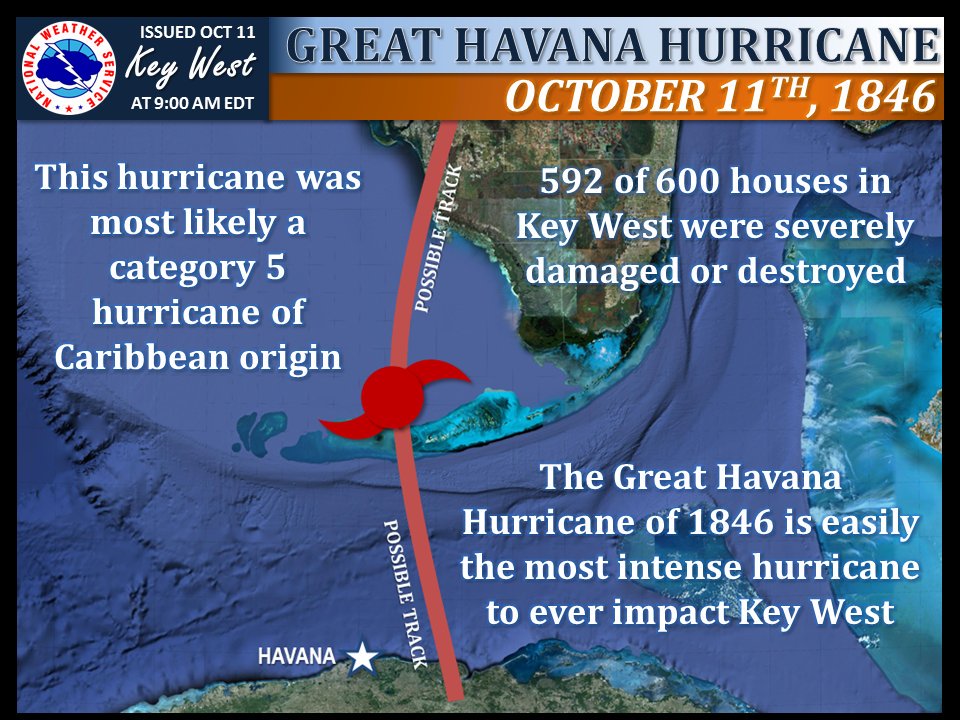The Great Key West Hurricane of 1846
June- too soon. July– stand by! August– look out you must. September– remember. October, all over. That is an old mariner’s poem about Caribbean hurricanes. But as we have seen, there have been some very memorable hurricanes in October. The Great Hurricane of 1846 is one of those.
A favored area for October hurricanes is the Caribbean. On October 6, 1846, a hurricane was reported south of Jamaica. It moved northwestward, reaching Cuba on the 10th. Havana was especially hard hit with nearly every building damaged or destroyed and almost every ship in the harbor sunk or destroyed. The barometer at Havana dropped to 27.06 inches.
The hurricane moved northward and its effects began to be felt in Key West early on the morning of the 11th. By 10 a.m., winds were at gale force. By 2 p.m., winds were blowing at hurricane force. The sea began to rise as storm surge began to inundate the island. Water continued to rise until it was five feet deep in the city. A maximum surge of 7.5 feet was reported on the northeast side of the island. The city would remain mostly underwater until dawn the next morning. One observer reported that if the inundation would have continued for a few more hours, the island would have been scoured to the white sand. Only eight of the 600 homes in the city escaped near destruction. Many residents huddled on the highest part of the island, which was only 17 feet above sea level.
Two lighthouses were destroyed by the hurricane. The 85 foot Key West Lighthouse was toppled, sweeping fourteen souls to their deaths. The keeper and five other people were killed when the small island was inundated and the structure destroyed.
The tremendous hurricane moved northward over the eastern Gulf, swiping at the small town of Tampa and hitting near Cedar Key. But it was not finished yet. It moved northeastward passing back out into the Atlantic near Jacksonville. It caused hurricane conditions at Savannah. It then moved over eastern North Carolina and into the Chesapeake Bay on the 13th.
Flooding resulted in Baltimore, Maryland, and Washington, D.C. It was the most destructive storm in 30 years in Philadelphia, Pennsylvania.
Category: ALL POSTS, Met 101/Weather History



















